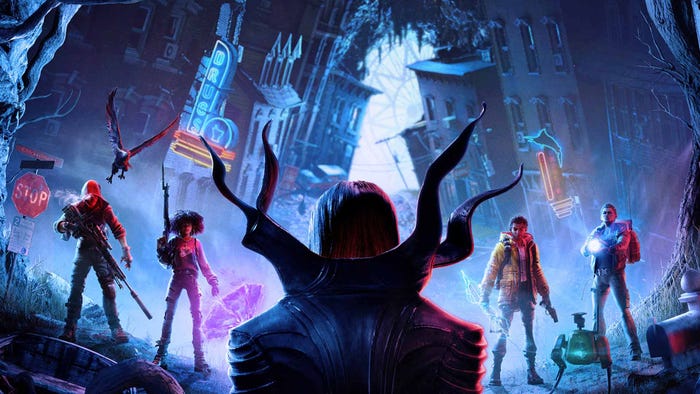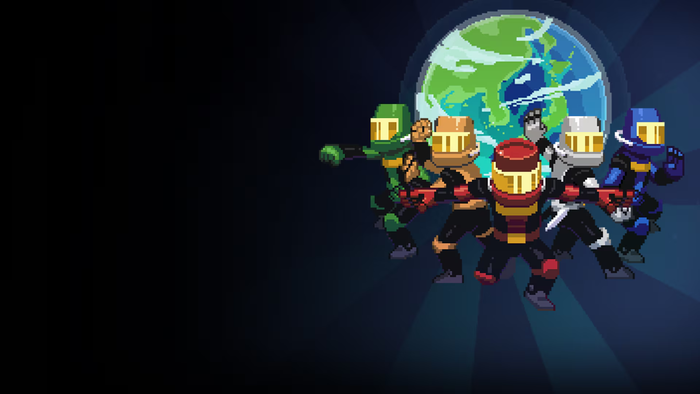Q&A: Ninety Nine Nights II Producer On The Extreme Differences Between East And West
Ninety Nine Nights II producer Tak Fujii shares his thoughts on the decline of Japanese game design and tech, citing animation firm Studio Ghibli (Totoro) as a model for Japanese game companies to follow.

As Western design philosophies have taken on increasing market dominance, how do Japanese designers view their differences -- and what do they see as their mandate as they aim to keep pace? Ninety Nine Nights II producer Tak Fujii sees an important marriage of scenario and distinctive technology evolution as a primary goal. The newly-launched Ninety Nine Nights II is an extreme hack and slash game in the vein of Dynasty Warriors or Sengoku Basara, but versus its competitors boasts some one million troops to dispatch simultaneously. The game releases this week, and was developed by Feelplus under Q Entertainment, and is being published in North America by Konami. We got a chance to speak with Konami-side producer Fujii about the game's unique qualities. Fujii previously spent several years working on the Pro Evolution Soccer franchise, familiarizing himself with Western game taste there. Gamasutra sat down with Tak Fujii to discuss the game itself, but also how Japan can return to its design roots to create something truly new - even if we may not be seeing that in Ninety Nine Nights II itself. This hack-and-slash genre is pretty much dominated by Dynasty Warriors. Why tackle this crowded space? TF: Well I would say that Dynasty Warriors is one of the successful titles in the Japanese market, and did well in the Western market as well so why not try. And you know go back to 2006 and Ninety Nine Nights itself was a kind of phenomenon, at least for a Japanese publisher, so, you know. Why not try and do another version? Ninety Nine Nights II has a complicated history in terms of what publisher was going to release it. How did Konami wind up becoming the publisher? TF: Well, that wasn't really our choice. It was up to Feelplus, or I would say AQ Interactive right now, who they went to for publishing. You know, we are a Japanese publisher and they are a Japanese developer and you know, what they're expecting was the best performance for the worldwide, not only Japan, not only the Western market. So you know, thinking about the publisher which does well, they chose us! What is your specific role in working with Ninety Nine Nights II? TF: Well, very much the publishing producer, but I also work with the team, figuring out how it should be, so it's very much half between the creative and half between the PR and publishing itself. It seems that's much more true in Japan that someone who takes the title of "producer" actually has more creative input than in the U.S. In the U.S. the producer is much more of a scheduling guy, whereas in Japan it's like halfway between designer and PR sometimes. TF: Well, for the typical Japanese style it's very much-- I would say they stick with the very much creative side much more than the management side. But, you know, things are changing, like, the reason I'm here is for PR. So, you know times have changed, and as you know, we used to have very good Japaneses game all over the world. But now, compared to the others from capturing the Western market we are not doing really well, so we gotta change, you know, our scheme or style, which means the producer has gotta be much more on the PR side and the management side, rather than just in creating, creating, creating. Why do you think that has happened, that Japan has kind of fallen behind? Because when I was a kid, all of the best games came from Japan, especially on the console. TF: Well, I would say, hmmm...what should I say - can I say it's American fan's fault? [laughs] I guess you could! TF: No, seriously though, back to the nice old 90's-- 80's, 90's, you know. We developers, we hired so many people for these games, and a small team could make a good game, with a maximum of 20 people on the team. But now, talking game products in Western culture, it's a hundred something people getting involved with it. But you know behind that, it's a totally different scheme right now, and to apply to our games all the fancy high-resolution high-def stuff you definitely do need the people and the money and of course technology. And I would say that all the western market game type of tech is based on the Hollywood technique, like CG work and stuff. But if we're talking about a Japanese CG world, it's now really compatible with the western market. We don't use it so much for media. That makes a huge difference in these last ten years, where the technology was. And the Western market is getting more and more into realistic stuff like the World War II shooters and FPS stuff. But to make that, it means tons of money, and you know Nintendo brought out their answer. "We don't fight with technology. We fight with our game." That's one answer. Just my personal opinion -- I think that to some degree because developers in Japan have noticed this trend toward technology in the West, they've tried to emulate this, but Japan's strength has traditionally not been the technology but rather the design and scenario, and I feel like in trying to get toward the technology, they have abandoned some of the design and scenario that was so excellent in the past. I feel like if you could combine those things... TF: Right. That is exactly what we have to do. Because talking about technology stuff, if we tried to follow, you know, we're not gonna pass the West. And if you talk about Studio Ghibli, that cartoon studio? With Hayao Miyazaki? Yes, I know them. TF: They have their own tech, their own way, their own production style. And in the world, they're quite popular. And on top of that I'm talking about Gundam or some of the manga culture, you know. So we don't have to follow. We don't have to really emulate the Western culture. So we have to try to combine our basics, and new tech, and make something new. That's our task. So, but, I mean I dunno if we will see this kind of example in Ninety Nine Nights II because it's a very straightforward genre, hack and slash. I mean, I dunno if it's going to push any of those boundaries. What do you think? TF: Well yeah, at least in Japan, we have this thing where in the scenario we're like "Okay, I guess we've got to have characters represent light and dark." But I think we're pushing that somewhere else at least. That was in the original Ninety Nine Nights too, though! TF: But this time, it's even more!
About the Author(s)
You May Also Like













